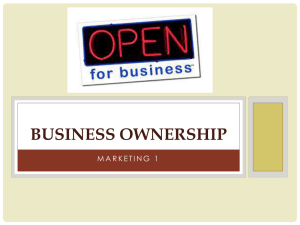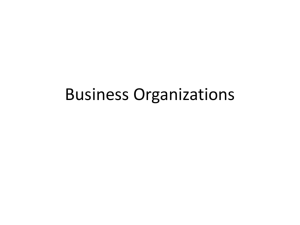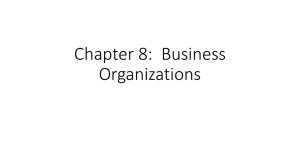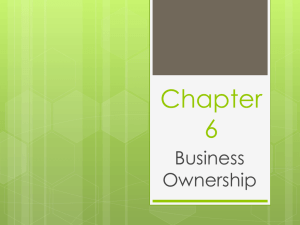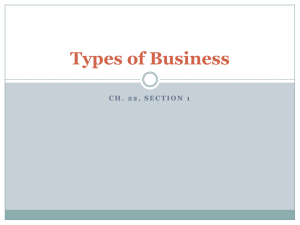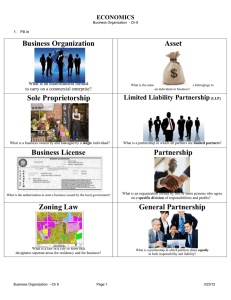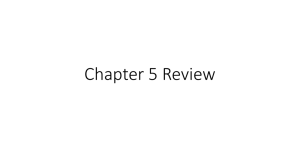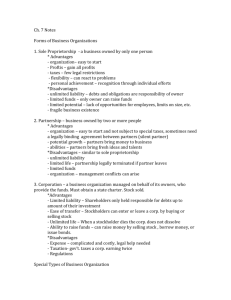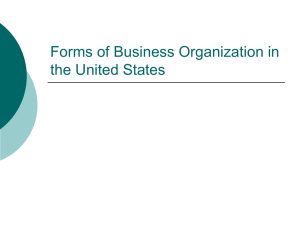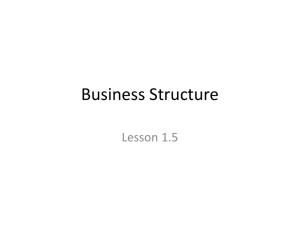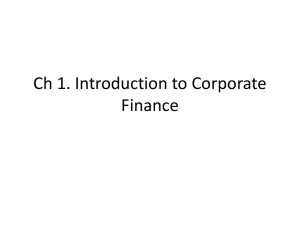Business Forms Exam: BUS-115 Chapter 5 Quiz
advertisement
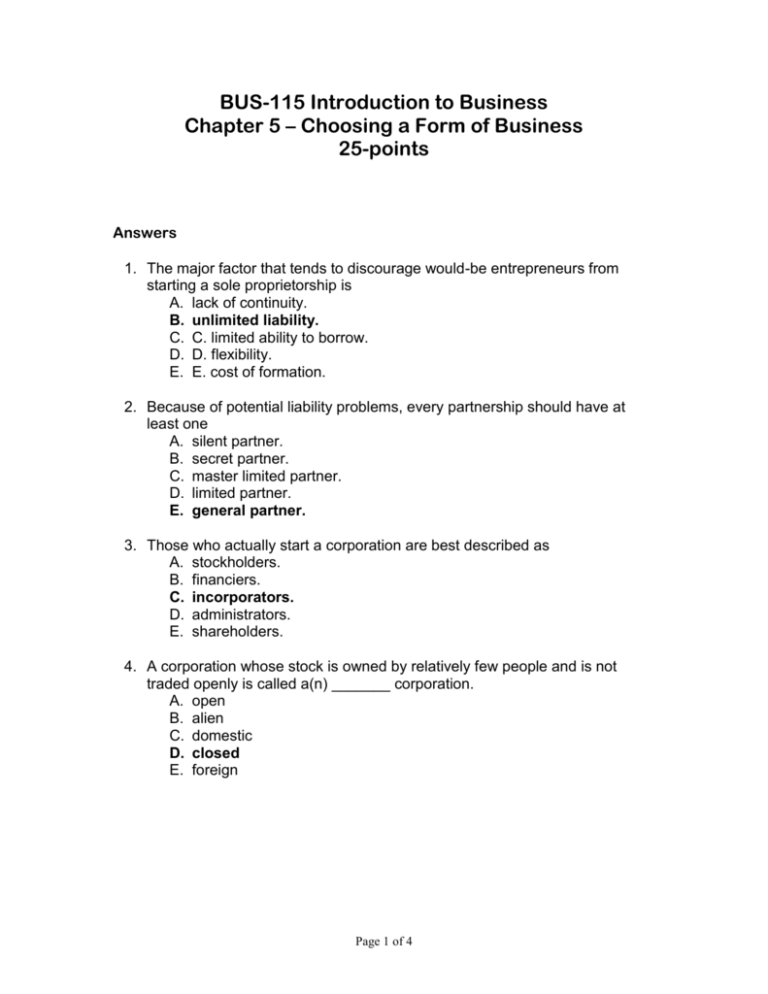
BUS-115 Introduction to Business Chapter 5 – Choosing a Form of Business 25-points Answers 1. The major factor that tends to discourage would-be entrepreneurs from starting a sole proprietorship is A. lack of continuity. B. unlimited liability. C. C. limited ability to borrow. D. D. flexibility. E. E. cost of formation. 2. Because of potential liability problems, every partnership should have at least one A. silent partner. B. secret partner. C. master limited partner. D. limited partner. E. general partner. 3. Those who actually start a corporation are best described as A. stockholders. B. financiers. C. incorporators. D. administrators. E. shareholders. 4. A corporation whose stock is owned by relatively few people and is not traded openly is called a(n) _______ corporation. A. open B. alien C. domestic D. closed E. foreign Page 1 of 4 5. Which state is acknowledged as offering the most lenient tax structure for corporations? A. California B. Illinois C. New Jersey D. New York E. Delaware 6. The owners of common stock A. don't have voting rights. B. can claim profits before preferred stockholders. C. have one vote for each share owned. D. D. always get preemptive rights. E. E. usually live where the company is located. 7. One of the advantages of incorporating your business is A. unlimited liability. B. the expense of formation. C. double taxation. D. the possibility of frozen investment. E. limited liability. 8. An S-corporation A. must have no more than seventy-five shareholders. B. is taxed just as any other corporation is taxed. C. may have several classes of outstanding stock. D. is another name for a service corporation. E. does not require a state charter. 9. Ease of raising capital is a characteristic of which type of ownership? A. Cooperatives B. Corporations C. Sole proprietorships D. Not-for-profit corporations E. Foreign corporations 10. Individuals or firms form cooperatives to A. engage in business activities while avoiding traditional, impersonal forms of business ownership. B. avoid double taxation. C. perform a specific task that requires more capital than any one person or firm is willing to put up. D. perform some business function more effectively as an association than any member could by acting alone. E. increase profits by acting as a group. Page 2 of 4 11. A __________ is a situation in which existing management and board of directors are against another firm taking over their firm. A. hostile takeover B. proxy battle C. golden parachute D. leveraged buyout E. vertical merger 12. True or False? Organizing a sole proprietorship requires an attorney to prepare the papers. 13. True or False? Having unlimited liability is a favorable characteristic of a sole proprietorship. 14. True or False? The partnership form of ownership is more prevalent than the corporate form of ownership. 15. True or False? Articles of partnership are a contract describing the terms of a partnership. 16. True or False? It is generally easier to withdraw funds from a partnership than from a corporation. 17. True or False? Common stock represents shares of ownership in a corporation. 18. True or False? Preferred stockholders have voting rights. 19. True or False? The president of a company is appointed by the board of directors. 20. True or False? Double taxation is a disadvantage of the corporate form of business ownership. 21. True or False? The S-corporation form of organization allows a corporation to avoid double taxation. 22. True or False? Cooperatives are most prevalent in the banking industry. 23. True or False? A joint venture is formed to achieve a specific goal, and when the goal is reached, the joint venture is dissolved. 24. True or False? A hostile takeover is a situation when existing managers are in favor of a merger, but stockholders refuse to sell the company. Page 3 of 4 25. True or False? A divestiture is a purchase arrangement that allows a firm's managers and employees or group of investors to purchase a company. Page 4 of 4
